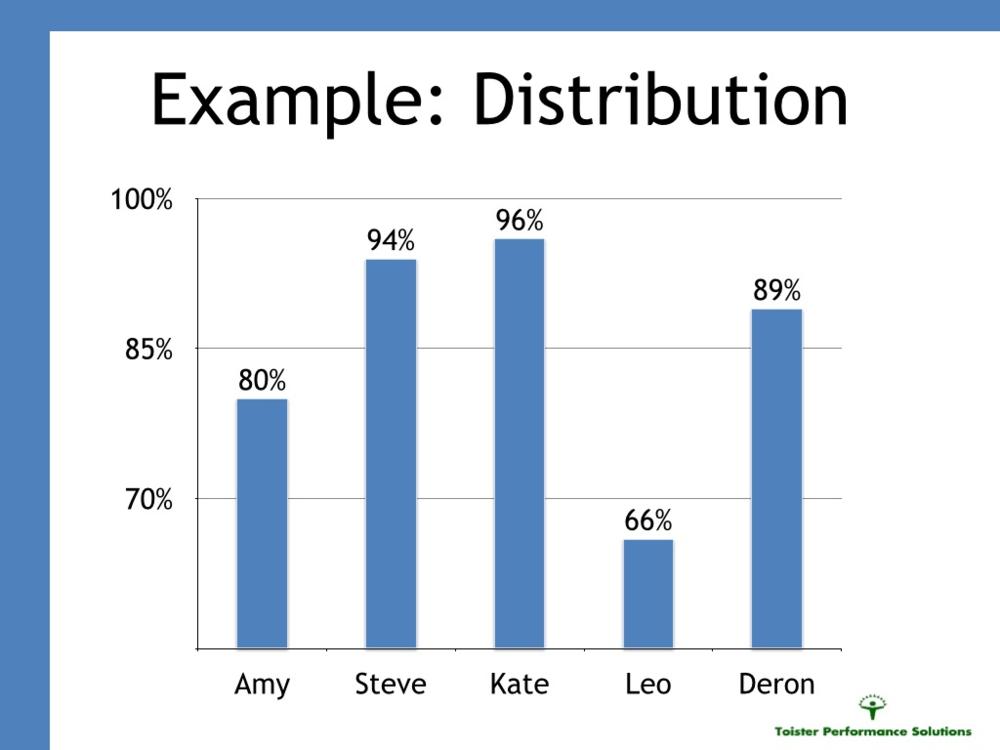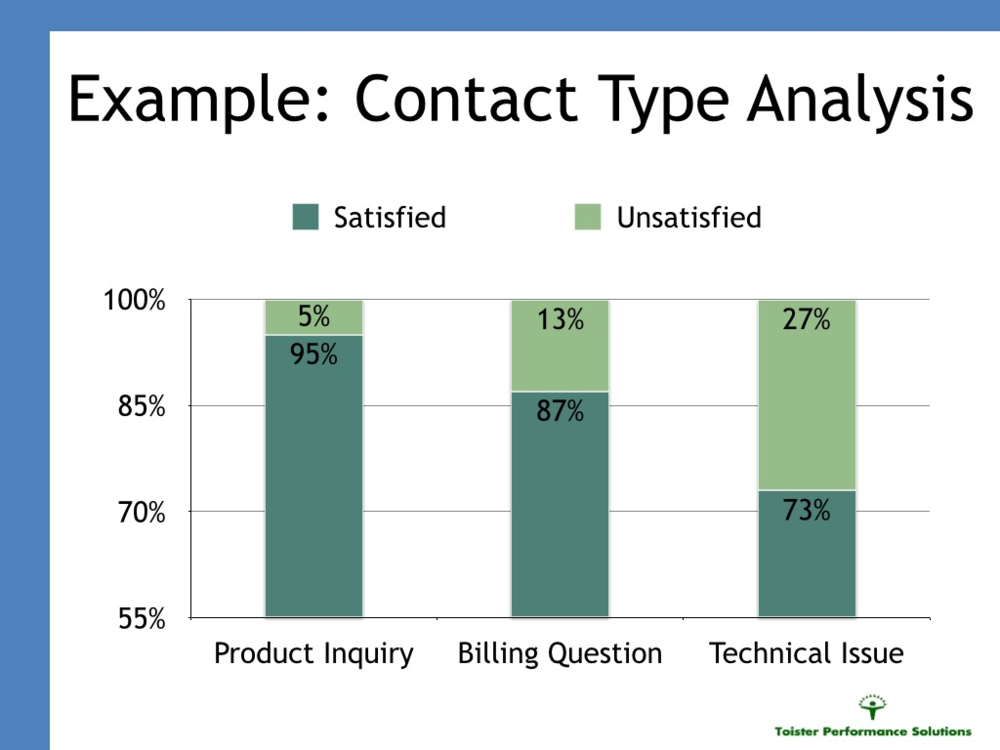You probably survey your customers.
But, do you learn anything from those surveys? More important, do you use that insight to improve service?
Chip Bell, author of 9 1/2 Principles of Innovative Service, recently shared this startling stat from a Gartner Group study:
95 percent of companies survey their customers, but only 10 percent actually use the feedback to take action.
Yikes!
Today, I hosted a webinar on analyzing and acting on customer satisfaction survey data. This post is a re-cap of the key lessons from the webinar along with some bonus information.
You can watch the webinar here.
How to Quickly Analyze Your Data
Let’s say your overall customer satisfaction is 85 percent.
By itself, the number doesn’t tell you much. The key to analyzing this data is to dig one level deeper.
For example, you could look at the distribution of survey scores by employee:

Suddenly, you see that Leo may need some extra help.
You could also look at the distribution of survey scores by the type of service request:

This reveals that product inquiries are a strength, but technical support leaves something to be desired.
If Leo gets a technical support call, you’re doomed.
Identifying Pain Points
Before you fire Leo or stop offering technical support, you may want to dig deeper still. The goal should be finding the true root cause of the problem.
One way to do this is to hone in on surveys where customers gave technical support an unsatisfactory survey score. Can you spot some themes among their comments?
Here’s an example:
- It took way too long to get a simple issue resolved!
- The guy didn’t seem to know what he was doing.
- I got transferred twice before someone could help me.
- Problem not resolved! I’ve had to call back three times.
- The lady seemed confused and overwhelmed.
A theme or two emerges. The comments suggest that customers give low scores for technical support when they get the runaround or the support rep doesn’t appear to be highly competent.
Turning Insight into Action
Knowing the specific issues that annoy your customers is a good start. Now, you need to investigate to find the root cause of the problem.
In the technical support example, the best way to do this would be to spend some time with those employees. Share with them the problem you’re trying to solve. Ask a few questions. Watch them do their work.
The root cause of the problems often becomes obvious after just a few minutes of observation.
Four things might jump out if you spent some time with this technical support team:
- They feel pressured to solve problems quickly to meet the department standard for Average Handle Time (AHT).
- This pressure causes them to take shortcuts to maintain the AHT standard.
- These shortcuts frequently lead them to transfer a call too quickly or misunderstand a customer’s needs because they aren’t listening carefully.
- The most inexperienced rep, Leo, has a particularly hard time with this.
Now that you know the root cause, you can take action.
Perhaps you could emphasize first contact resolution over AHT with your team. Focusing on resolving the problem makes customers happier. It also reduces callbacks, which in turn reduces overall call volume.
And, focusing on first contact resolution doesn’t necessarily cause a spike in AHT.
You may also want to check in with Leo to make sure he doesn’t get lost on the learning curve.
Revisit Your Surveys
The final step in the process is to revisit your survey. You want to see if the actions you’ve taken have actually increased customer satisfaction.
You’ll be realizing the true value of a customer service survey when you follow these steps on a regular basis. Service will improve and your customers will be happier.




Having listened to your webinar, the points re. service improvement are certainly practical, but at a mostly functional and reactive level. Service groups often focus on the tangible and mechanical elements, and more depth will not really get into behavioral elements. For service to be truly effective, the drivers of customer behavior, which are largely emotional, need to be actively taken into consideration: http://www.qualitydigest.com/inside/quality-insider-article/customer-advocacy-behavior-measurement-part-2.html
Michael – you make a very good point about the contributions of emotions.
There is a definite connection between fixing service failures and making an emotional connection. One study found that 97% of service failures result in negative emotions. Using data to diagnose and prevent rational problems can thus prevent a lot of bad feelings.
Creating positive emotional connections with customers is an excellent “next level” aspiration.